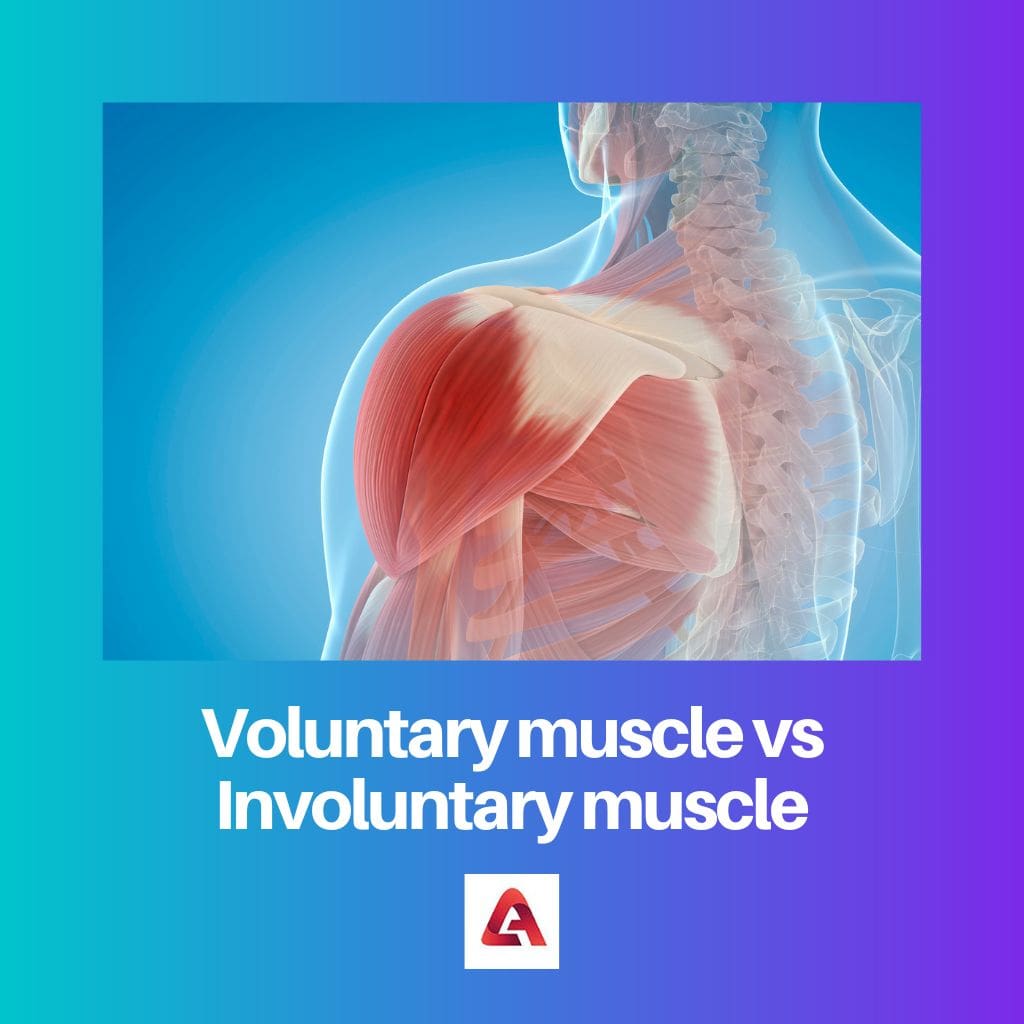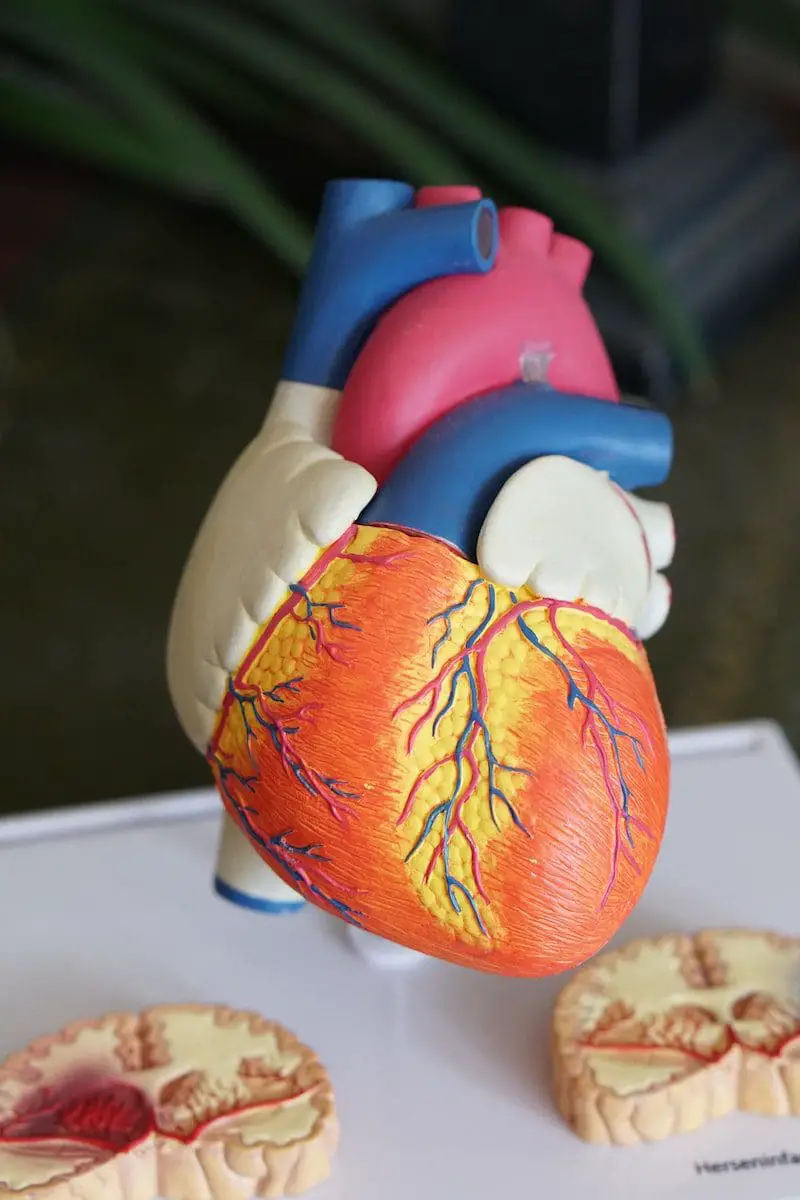Every human being is constructed with muscles. Muscles are soft tissues that consist of actin and myosin. They both constructively help create and change the shape and length of muscle cells.
Key Takeaways
- Voluntary muscles are consciously controlled, primarily used for locomotion and manipulation; involuntary muscles function without conscious effort, regulating internal processes.
- Skeletal muscles are the primary type of voluntary muscles, while involuntary muscles include smooth and cardiac muscles.
- Under a microscope, voluntary muscles exhibit a striated appearance, while involuntary muscles have a smoother, non-striated appearance.
Voluntary Muscle vs. Involuntary Muscle
We consciously control voluntary muscles to perform movements, such as walking, running, and lifting objects. They are attached to bones and are under the control of the central nervous system. The autonomic nervous system controls involuntary muscles and differs from voluntary muscles.

Voluntary muscles present in the body can have flexible movement on the person’s free will. At the same time, involuntary muscles are present in the body and cannot be controlled.
Comparison Table
| Parameter of Comparison | Voluntary Muscle | Involuntary Muscle |
|---|---|---|
| Control | It is controlled by the central nervous system | The autonomic nervous system controls it |
| Contraction | The contractions are rapid and powerful | The contractions are slow and rhythmic, always |
| Energy | The requirement for energy is high | The requirement for energy is less |
| Cell | The cells are multinucleated | The cells are uninucleated |
| Shape | They are long and cylindrical | They are small, thin, and spindle |
| Nucleus | The nucleus is present in the outer walls of the cell | It is present in the center of the cell |
| Work | It works under the command | It does not work under the control |
| Rest Period | It requires rest at regular intervals | It works continuously |
| Sarcolemma | Sarcolemma present is thick | Sarcolemma present is thin |
| Present in | It is present in the tongue, diaphragm and found attached to bones | It is present in alimentary tracts, respiratory tracts, blood vessels, etc. |
| Involvement | It is required in the movement of body parts | It is required in internal organ movement |
What is Voluntary Muscle?
Voluntary muscles are muscles on the body that can perform flexible movements on the person’s free will, and they are always attached to the skeleton system.
The sarcolemma is thick, connecting the muscle fiber to the connective tissue. Voluntary muscle plays a vital role in body movement. Contracting and relaxing the muscles.

What is Involuntary Muscle?
Involuntary muscles are muscles in the body that cannot be controlled; they are linked with the organs in the body that make slow and rhythmic continuous contraction and relaxation movements.
Unlike the voluntary muscles, the involuntary muscles are also known as visceral muscles as they are located in the walls of the internal organs such as the urinary bladders, uterus, alimentary canal, etc. They are thin, long, and spindle-shaped.

Main Difference Between Voluntary Muscle and Involuntary Muscle
- The voluntary muscle requires rest at regular intervals as they are fatigued after some time. The involuntary muscles can work continuously without any rest.
- The sarcolemma in the voluntary muscles is thick, whereas the sarcolemma in the involuntary muscle is thin.

- https://www.nejm.org/doi/full/10.1056/NEJM196412032712302
- https://www.sciencedirect.com/science/article/pii/S1090379812002322

The article presents a clear differentiation between voluntary and involuntary muscles, shedding light on their distinct structural and functional attributes. A commendable piece offering insightful details on muscle physiology.
I concur with your assessment, Hollie09. The informative content and clarity in delineating the differences between voluntary and involuntary muscles make this article a compelling source of knowledge.
Absolutely, Hollie09. The clarity and depth in distinguishing these muscle types provide valuable insights into their characteristics, rendering this article intellectually enriching.
The article provides an insightful explanation of the structural and functional disparities between voluntary and involuntary muscles. The content is well-organized, making it an intellectually stimulating piece.
Absolutely, the intellectual rigor in elucidating the finer details of muscle characteristics and functions elevates the article’s quality, providing a richer grasp of the topic.
I concur, Clarke Adam. The well-structured presentation of information coupled with the depth of content makes this article a significant contribution to the understanding of muscle physiology.
The thorough coverage of voluntary and involuntary muscles in this article presents a thought-provoking analysis, delivering valuable insights into the complexities of muscle physiology. An intellectually enriching read.
Absolutely, Matilda Edwards. The intellectual rigor and clarity in differentiating these muscle types advance the understanding of musculoskeletal physiology, making this article an essential reference for enthusiasts of human anatomy.
The detailed explanation of voluntary and involuntary muscles and their role in human physiology makes this an enlightening article. It effectively addresses the complexities of muscle types and their functions.
Absolutely, Will97. The comprehensive elucidation of the characteristics and involvements of these muscle types offers valuable insights into musculoskeletal physiology, enhancing the reader’s understanding.
The comprehensive overview of voluntary and involuntary muscles in this article serves as an enriching resource for individuals interested in human anatomy. The detailed comparison and structural aspects are enlightening.
I couldn’t agree more, Mohammed Clark. The depth of information and the well-researched content make this an intellectually stimulating read for those keen on understanding musculoskeletal physiology.
This article provides a comprehensive overview of the differences between voluntary and involuntary muscles and their characteristics. The details about these muscles and their functions were well explained, making this an informative and enlightening read.
Absolutely, this detailed characterization of voluntary and involuntary muscles is a valuable resource for understanding musculoskeletal physiology. Great post!
I completely agree with you, Alison93. The explanations provided about the muscle types and their involvements in body movements were clear and well-researched.
The article provides a well-structured and comprehensive overview of voluntary and involuntary muscles, distinguishing their structural features and functional differences. An intellectually enriching piece in the domain of human physiology.
Well articulated, Harrison Joanne. The informative content and clarity in presenting the nuances of voluntary and involuntary muscles make this article a valuable asset for individuals interested in human anatomy and physiology.
Indeed, the meticulous detail in explaining the distinct aspects of these muscle types contributes to the intellectual depth of this article, offering readers a comprehensive understanding of muscle physiology.
I found the comparison table particularly helpful in understanding the key differences between voluntary and involuntary muscles. This article effectively highlights the primary characteristics of each muscle type.
Completely agree, Owen52. The detailed analysis and clear distinctions enhance the understanding of voluntary and involuntary muscles, making the article a valuable reference.
Yes, the detailed comparison made it easier to grasp the distinct characteristics of these muscle types and their significance in human body functions.
The article’s elaboration on voluntary and involuntary muscles presents a well-researched and intellectually stimulating perspective. It delves into the depths of muscle physiology, offering a comprehensive understanding of their structural and functional attributes.
I agree with your assessment, Qgray. The detailed insights into the complexities of voluntary and involuntary muscles and their significance in human physiology render this article an intellectually engaging discourse.
The comprehensive comparison and detailed explanations of voluntary and involuntary muscles in this article provide a rich source of information, contributing to the intellectual discourse on human muscle physiology.
Absolutely, Brandon17. The analytical depth and clarity in delivering the essence of muscle characteristics and functions make this article an intellectually enriching read for those exploring the domain of human anatomy.